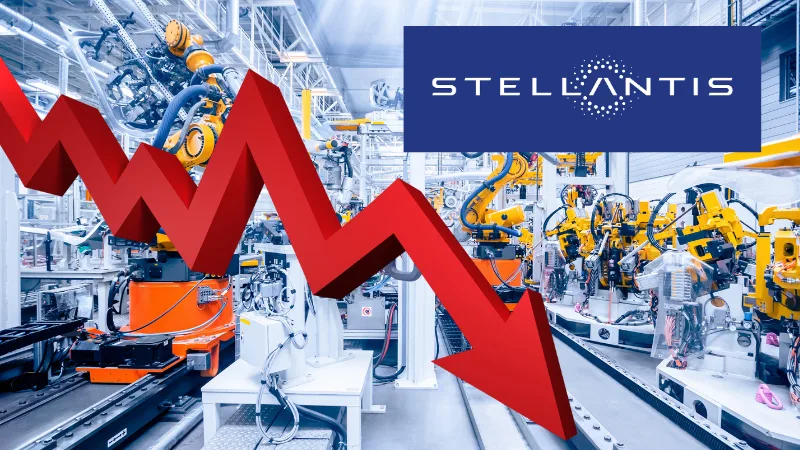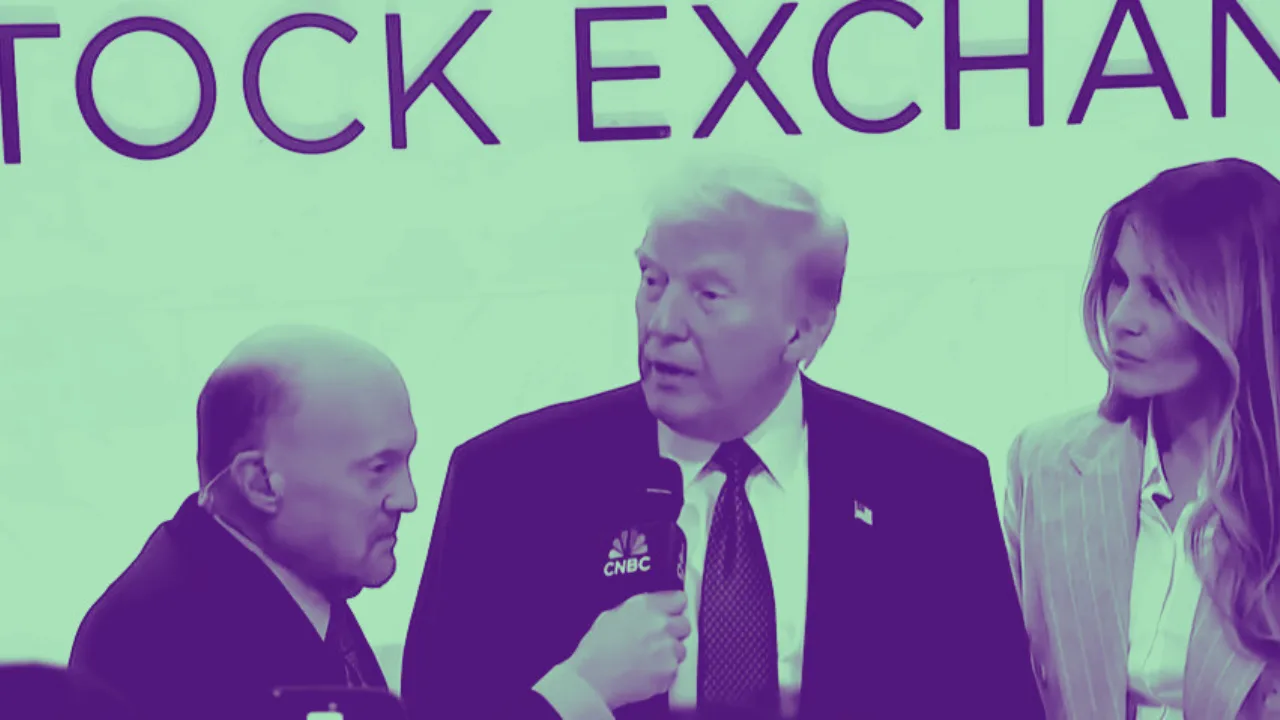Investors looking for value in the auto sector may want to steer clear of Stellantis N.V. (NYSE: STLA)—at least for now.
UBS analyst Patrick Hummel recently issued a stark warning about the global automaker, downgrading the stock from “Buy” to “Neutral” and slashing his 12-month price target from $18 to just $10 per share. The revised outlook reflects growing pessimism surrounding the automaker’s exposure to escalating global tariff risks, weakening demand in key markets, and a cloudy future for its North American turnaround strategy.
The warning comes after Stellantis shares suffered a steep sell-off, plunging more than 28% over the last month alone. Year-to-date, the stock is down more than 32%, signaling deep investor concern over how the company will weather the shifting trade landscape.
Tariffs Reshape the Playing Field for Global Automakers
Hummel’s downgrade centers on one critical issue: auto tariffs.
In a volatile geopolitical climate, protectionist trade policies are making a comeback—and automakers with global supply chains are getting caught in the crossfire. U.S. President Donald Trump recently reintroduced a wave of targeted tariffs against foreign-made vehicles and auto parts, and China, Europe, and other trading partners are now retaliating with their own duties.
This spells trouble for multinational car manufacturers like Stellantis, which relies heavily on cross-border production and sales. According to UBS, approximately 35% of Stellantis vehicles sold in the United States are imported—meaning the company is especially vulnerable to rising costs from new tariffs.
“It’s impossible to be confident on a U.S. turnaround in an auto tariff world,” Hummel noted in his report. “Without the perspective of a successful U.S. turnaround, a core element to our Buy thesis no longer exists.”

North America Is No Longer the Growth Engine
Stellantis has long counted on the North American market to drive its profits. Brands like Jeep, Ram, and Dodge have historically performed well in the U.S., and the region contributes significantly to the company’s overall earnings.
But now, that assumption is being challenged.
With tariffs potentially adding thousands of dollars in costs per vehicle, Stellantis’s competitiveness in the U.S. is at risk. UBS forecasts that the company could experience earnings losses in North America—a region once central to its bullish outlook.
At the same time, a broader economic slowdown could further dampen demand. Tariffs, by design, reduce trade volume and increase prices. As a result, UBS warns that Stellantis’s earnings could also take a hit in other regions, particularly if global GDP growth weakens under the weight of a prolonged trade war.
Free Cash Flow Concerns Emerge
Another red flag for investors: cash flow.
UBS projects that Stellantis is likely to post negative free cash flow in 2025, largely due to trade-related headwinds and declining vehicle demand. While the company maintains a strong balance sheet and remains in “net cash territory,” Hummel suggests that investors should not expect meaningful cash returns in the near future.
“We believe Stellantis won’t likely be a stock to own for cash returns in the foreseeable future,” he stated.
That’s a troubling development, especially at a time when investors are gravitating toward companies with reliable dividend payouts or aggressive share buybacks.
A Shrinking Market and Rising Competition
To make matters worse, the U.S. auto market itself may be shrinking.
After a post-pandemic surge in vehicle sales, higher interest rates, tighter credit conditions, and increased vehicle prices are beginning to push consumers out of the market. Even with attractive financing deals, auto loans have become harder to secure, and many buyers are delaying purchases or turning to the used vehicle market.
Meanwhile, competition in the electric vehicle (EV) space is heating up. Tesla, Ford, General Motors, and a host of Chinese EV makers are ramping up production and innovation, forcing legacy automakers like Stellantis to accelerate their EV transition while absorbing higher R&D costs.
Stellantis has ambitious EV plans—promising to introduce dozens of new electric models under its 14-brand portfolio—but analysts are questioning whether it can execute effectively in a high-cost, high-competition environment.
Leadership Transition Looms
One potential wildcard: new leadership.
Stellantis CEO Carlos Tavares has led the company through a significant merger and transformation, but with uncertainty mounting, investors are increasingly looking for signals of strategic recalibration. Hummel noted that any CEO transition or major reshoring announcements could shift sentiment.
Reshoring, or relocating production to the U.S. to avoid tariffs, may help the company regain investor confidence—but it won’t be cheap. Building new factories or expanding domestic capacity requires years of planning and billions in capital investment. It’s a long-term fix, not a short-term solution.
Plant Closures Fuel Investor Anxiety
Adding to the gloomy picture, Stellantis announced earlier this month that it would pause production at two of its assembly plants—one in Canada and one in Mexico.
The company cited declining demand and macroeconomic uncertainty for the shutdowns, but the timing couldn’t be worse. As investors were already digesting UBS’s downgrade, the announcement reinforced fears that Stellantis may be in for a rough second half of the year.
The production pauses are a stark reminder of how rapidly conditions can deteriorate in today’s unpredictable global economy.
The Bigger Picture: What This Means for Investors
While Stellantis isn’t the only automaker feeling the pressure from shifting trade policy, it appears to be one of the most exposed. The company’s dependence on imported vehicles for the U.S. market, its large international footprint, and its ambitious EV roadmap all make it highly sensitive to regulatory and macroeconomic shocks.
For investors, this means caution is warranted.
Until there is greater clarity around tariff structures, global GDP growth, and the company’s ability to realign its operations, Stellantis may remain a high-risk stock with limited upside potential. Even UBS’s lowered price target of $10 per share only implies a 13% upside—hardly compelling given the volatility.
What to Watch Moving Forward
Here are the key developments that investors should monitor in the coming months:
- Tariff Announcements: Any escalation or de-escalation in auto tariffs by the U.S., China, or the EU could materially impact Stellantis’s margins.
- Leadership News: A CEO change or major strategic shift could alter the company’s trajectory.
- Cash Flow Updates: Quarterly results will shed light on whether Stellantis can control costs and avoid slipping into a cash burn scenario.
- Reshoring Plans: If the company begins building or expanding U.S.-based production, that could signal a long-term commitment to mitigating trade risk.
- Market Share Trends: Any signs of stabilization or recovery in U.S. market share would be a bullish indicator.
Bottom Line
In a trade environment that is becoming increasingly uncertain, Stellantis may be caught on the wrong side of the tariff divide. While its global scale, diversified brand portfolio, and cash-rich balance sheet are strengths, they may not be enough to overcome the storm brewing in international trade and the domestic auto market.
For now, UBS’s advice is clear: Stellantis is a stock to avoid—at least until the dust settles and a clearer path forward emerges.





